
Birds & Other Animals
It's Unusual; It's a Surprise; and It's Old Hat!
The birds I have been able to photograph the past few days fit the title well. Let's start with the unusual.
The Common Grackle is not an unknown sight here in the Shenandoah Valley of Virginia (USA), but it is unseal compared to our sights of Starlings.
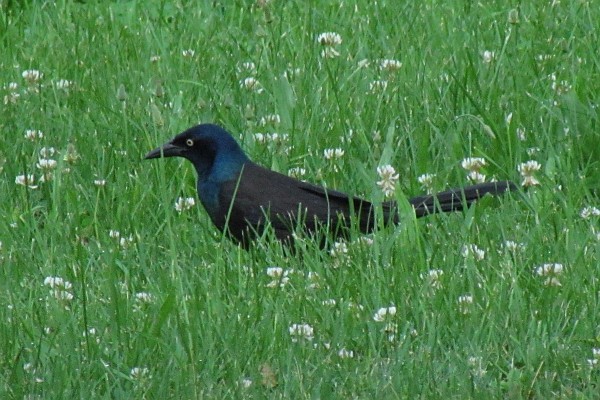
A Common Grackle in Our Backyard among White Clover (17-Jun-14; © Richard L. Bowman)
The surprise came when I heard a bird over on the railroad crossing guard while I was photographing some trains near the Bruce St. crossing. So with my bad eyesight I simply aimed my camera and took a picture. SURPRISE!! I caught a Mockingbird.
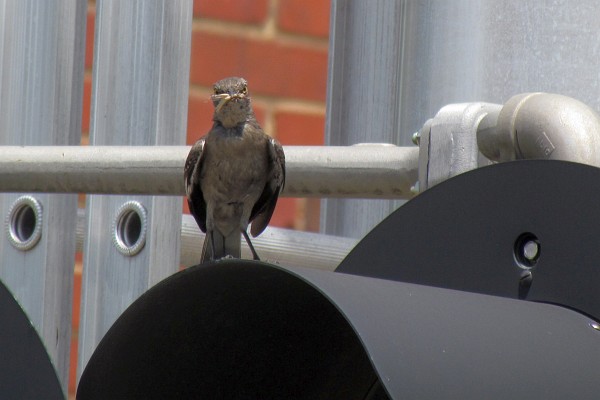
Mockingbird on a Railroad Crossing Warning Light (18-Jun-14; © Richard L. Bowman)
Take a closer look at its mouth. It's full of twigs or grass (building material for nest).
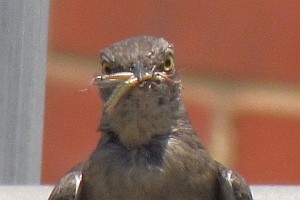
Mockingbird with Nesting Material in Its Beak (18-Jun-14; © Richard L. Bowman)
A Mourning Dove can often be seen sitting on the electrical wire across our backyard. Two together are still common but a bit more unusual.
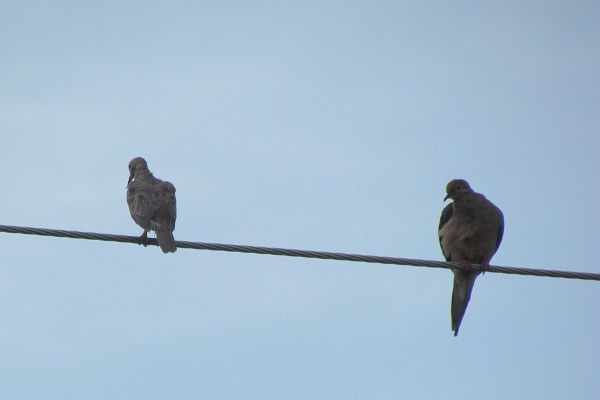
Two Mourning Doves on an Electrical Wire across Our Yard (19-Jun-14; © Richard L. Bowman)
And I caught one of them with its head turned nearly 180o (looking across its back)!
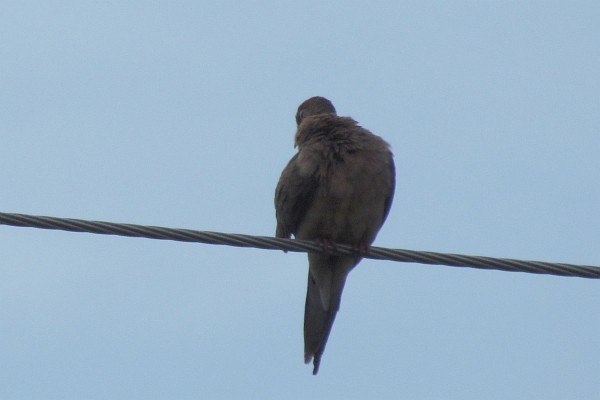
One Mourning Doves on an Electrical Wire with Its Head Turned Around (19-Jun-14; © Richard L. Bowman)
The common sights along with more unusual sightings and an occasional surprise are what makes photography in our backyard fun.
June 16, 2014
Birds I've Seen Since We Are Back in Harrisonburg Again
I'll begin with the bird that symbolizes the beginning of spring for many in the middle to northern parts of the USA--the American Robin. This one I captured the second day we were back in Harrisonburg, VA, USA.
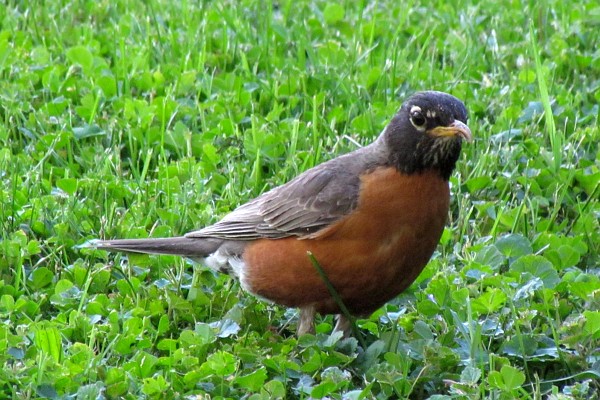
American Robin (I) (24-May-14; © Richard L. Bowman)
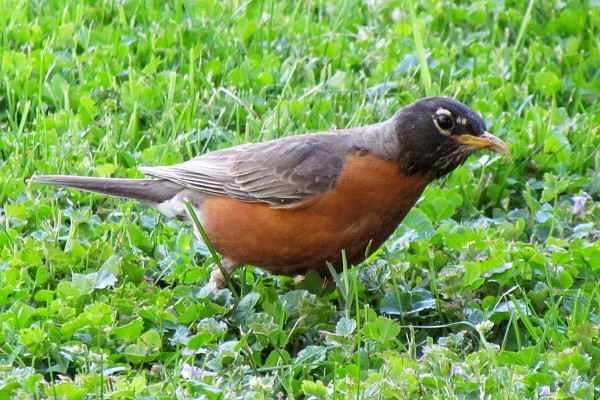
American Robin (II) (24-May-14; © Richard L. Bowman)
An enjoyable sound is one of the American Robins sitting on the roof of our house singing to the whole world.
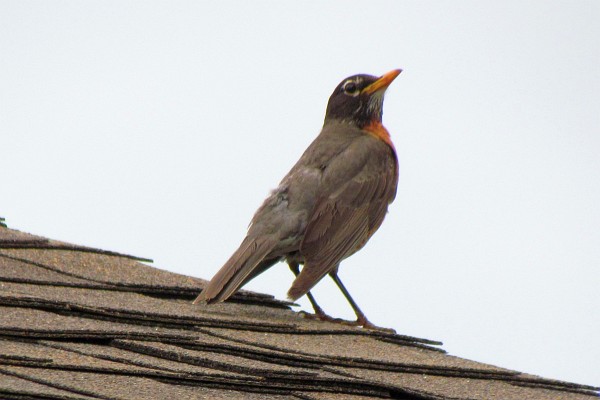
American Robin Sitting on the Edge of Our House Roof (3-Jun-14; © Richard L. Bowman)
And here is one that is just a but more artistic.
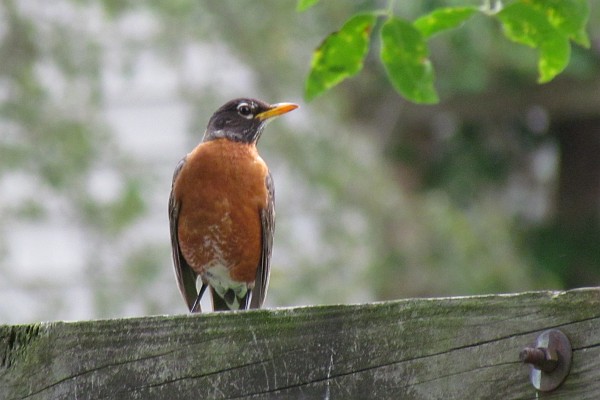
American Robin on a Weathered Clothes Line Post (8-Jun-14; © Richard L. Bowman)
When seen by themselves, I cannot always tell the Gray Catbird and the Northern Mockingbird apart. But here are what I have used in identifying the birds below. The Gray Catbird is more uniformly gray with a brownish spot underside back near the tail. Also, the Northern Mockingbird has a slightly curved bill. ("All About Birds" from The Cornell Lab of Ornithology is one of my standard sources on North American birds.)
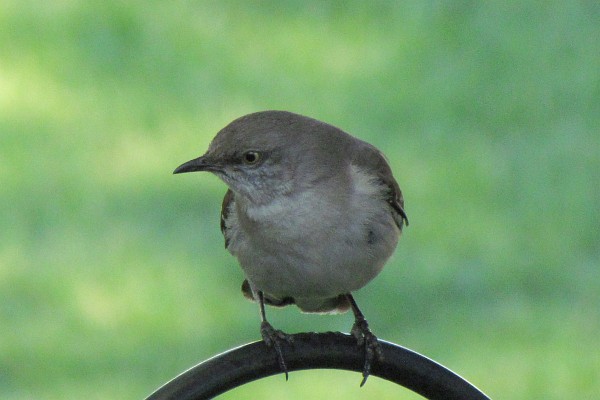
Northern Mockingbird (24-May-14; © Richard L. Bowman)
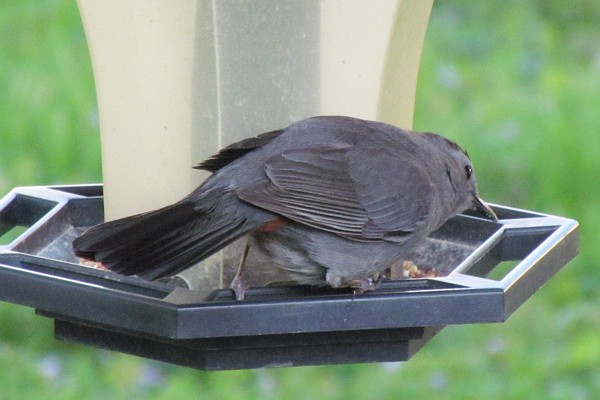
Catbird (24-May-14; © Richard L. Bowman)
Since we came back so late this spring to Harrisonburg and because our legs give us a lot of pain, we decided we would not plant and nurture a garden. After seeing this healthy Eastern Cottontail Rabbit under our bird feeders in broad daylight, I'm thinking that decision was a good one. These rabbits enjoy the succulent young planst that show up in the garden when the seeds generate from bean and lettuce seed, in particular.
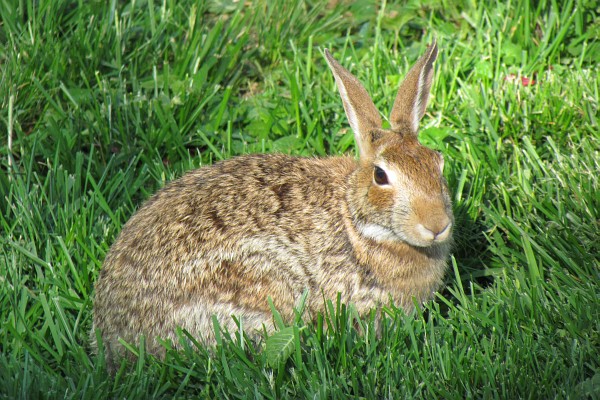
Eastern Cottontail Rabbit Lying on the Ground (24-May-14; © Richard L. Bowman)
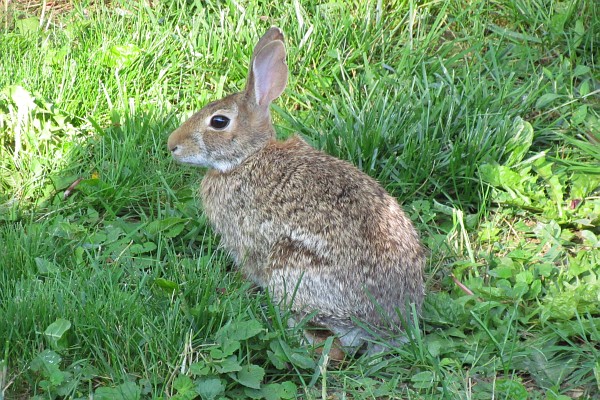
Eastern Cottontail Rabbit Sitting on Our Lawn (24-May-14; © Richard L. Bowman)
A couple of weeks later, I found this Cottontail out further on our lawn. Was it the same one that had been under our bird feeders?
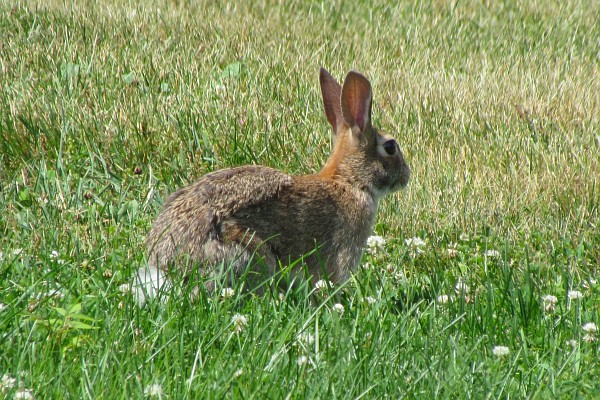
Eastern Cottontail Rabbit Sitting Further Out on Our Lawn (9-Jun-14; © Richard L. Bowman
Then there is the 19th Century import who has now become one of the most numerous songbirds in North America, the European Starling (more info).
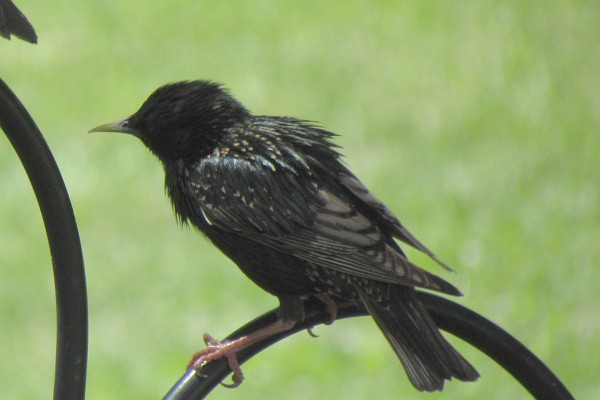
Adult European Starling (24-May-14; © Richard L. Bowman)
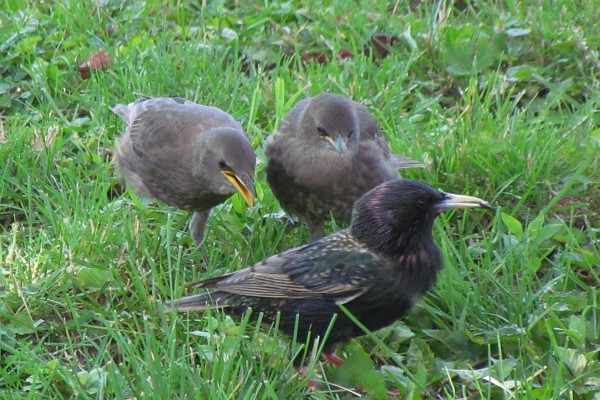
One Adult and Two Immature European Starlings (24-May-14; © Richard L. Bowman)
House Sparrows still show up regularly at our bird feeders even just days after I filled them for the first time in four months.
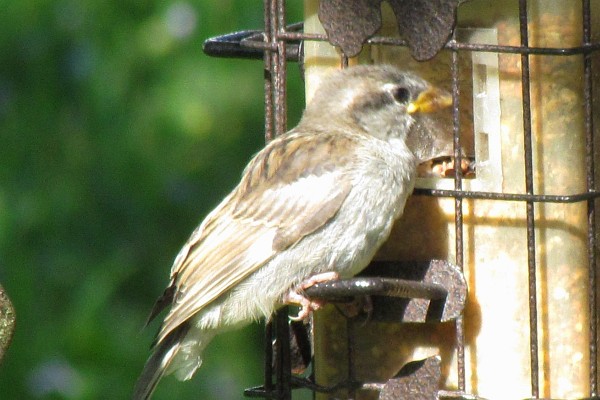
Female House Sparrow on Bird Feeder (26-May-14; © Richard L. Bowman)
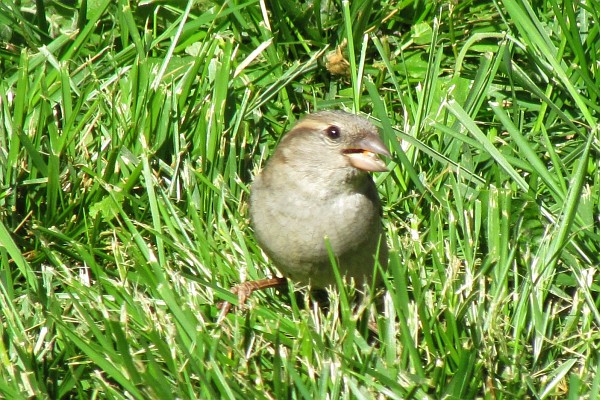
Female House Sparrow on Lawn (I) (26-May-14; © Richard L. Bowman)
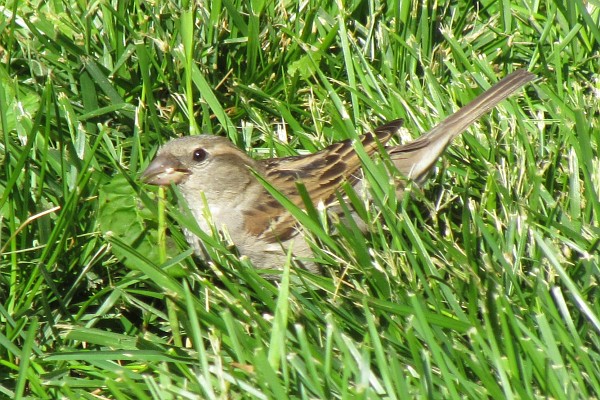
Female House Sparrow on Lawn (II) (26-May-14; © Richard L. Bowman)
Here is a male House Sparrow on our bird feeder.
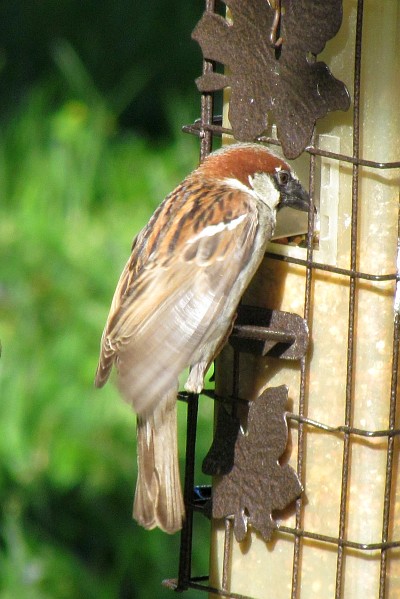
Male House Sparrow at Our Bird Feeder (6-Jun-14; © Richard L. Bowman)
On Memorial Day (USA) evening while we were at Elsie's sister's and brother-in-law's home, we heard and I captured this Northern Mockingbird outside of their house.
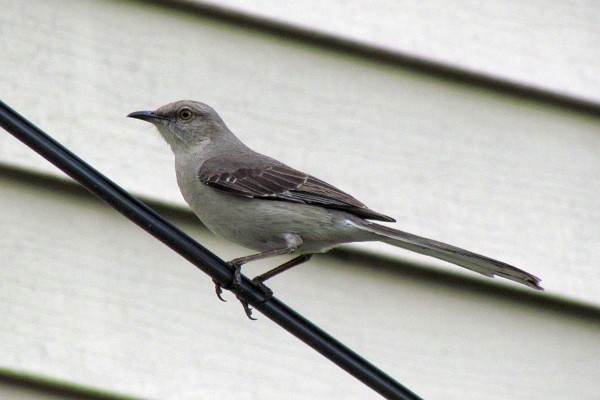
Northern Mockingbird on an Electrical Wire (27-May-14; © Richard L. Bowman)
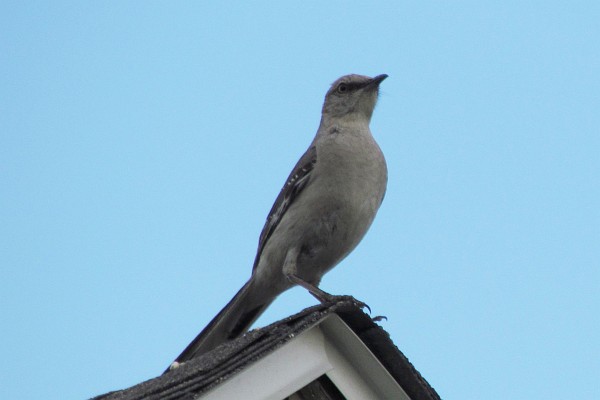
Northern Mockingbird on Peak of House Roof (27-May-14; © Richard L. Bowman)
Another furry creature who visits under (and often on) our bird feeders is an Eastern Gray Squirrel.
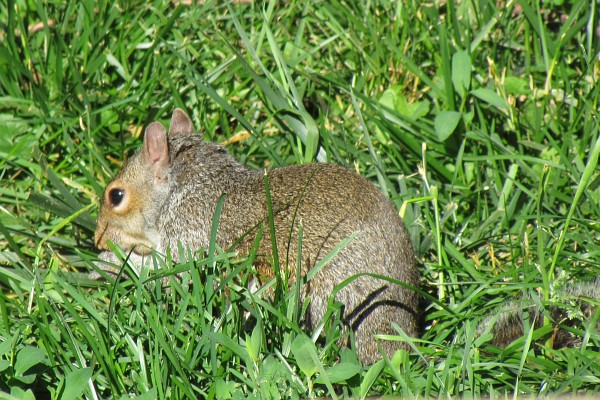
Eastern Gray Squirrel Lunching under our Bird Feeders (6-Jun-14; © Richard L. Bowman)
Another frequent visitor below our bird feeders is a bird--the Mourning Dove. Its low soft "mournful" cooing and slow imperturbable behavior is often gives it a soothing presence.
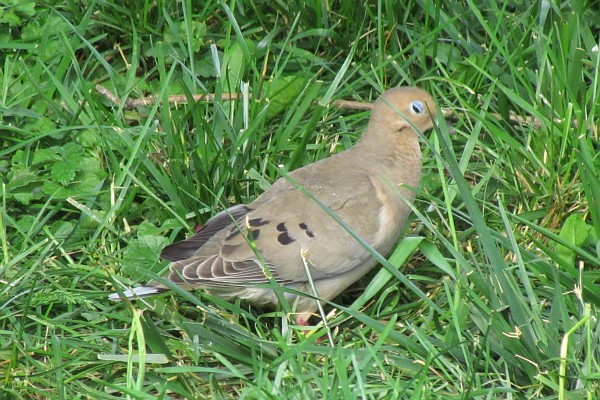
Mourning Dove Finding Seed in the Grass (7-Jun-14; © Richard L. Bowman)
The Mourning Doves also like to perch on the electrical wires going across our backyard.
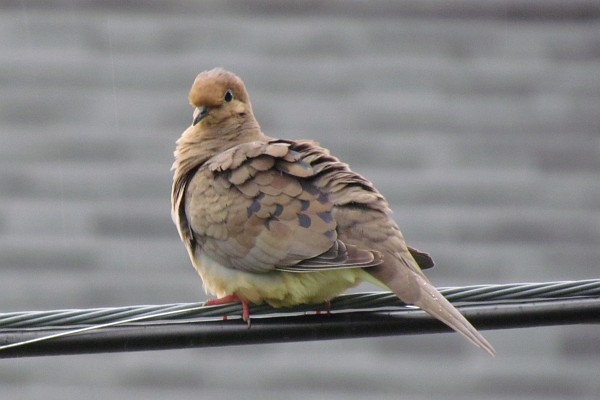
Mourning Dove Perched on an Electrical Wire (8-Jun-14; © Richard L. Bowman)
Between my bad eyesight (from scarring on the retina in the central vision area) and the excellent camouflage of leaves and branches in our ash tree, I can often hear but not find the birds who sit there and sing. But this Blue Jay I was able to capture.
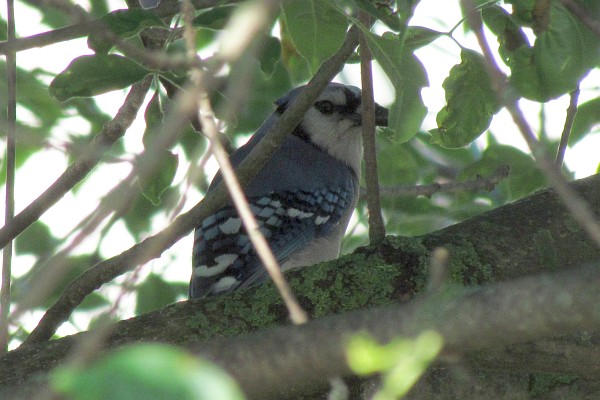
Blue Jay Almost Hidden in Our Ash Tree (9-Jun-14; © Richard L. Bowman)
It has been exciting to see that I can find lots of old friends among the birds at our feeders here in Harrisonburg, VA, USA--even after being absent for four months!
--©2013-14, Richard L. Bowman
Response Form